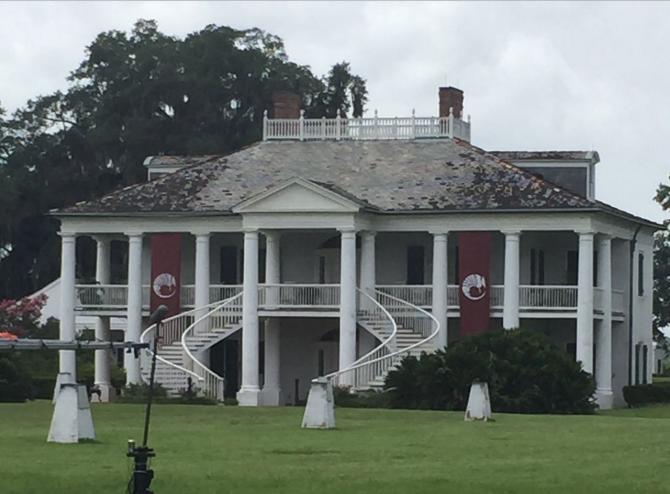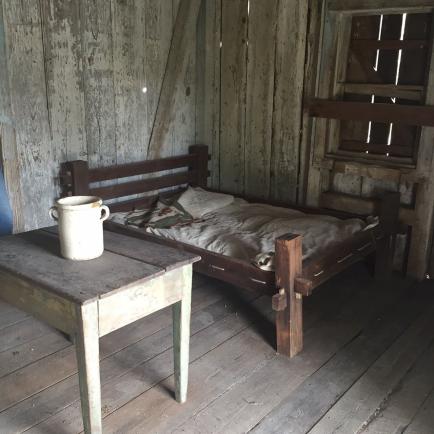
I’m not sure how I picked up the hobby of touring plantations. I think it started with my interest in architecture—picked up from my husband, who works in real estate—and my best friend of 20-plus years, who is an interior designer. Over the years, I’ve adopted their combined interests.
I’ve been to four plantations and an antebellum home with slave quarters over the past few months. That certainly doesn’t make me an expert on slavery or plantations. But it has given me some perspective on the popular article “I Used to Lead Tours at a Plantation. You Won’t Believe the Questions I Got About Slavery,” written by Margaret Biser for Vox.
Biser, who described herself as someone who once “worked at a historic site in the South,” shared her observations of some white people who visited the grounds and the sometimes bizarre questions they asked. I’ve had my own experiences with strange questions on the tours, notably all from black people, and also the bizarre commentary from white—always white, always women—docents.
My first plantation tour took place in March, when I visited Magnolia Plantation & Gardens in Charleston, S.C. The tour of the big house was OK, though it was smaller than I expected. I appreciated the architecture and interior, though I was never able to separate the opulence from the people who toiled miserably in cotton or tobacco fields. Every time the tour guide made a sweeping gesture alluding to the grandness of a room, I wondered about the enslaved men and women who were forced to work for free to make such luxuries possible.
As the other visitors, all of them white except for a friend accompanying me, oohed and aahed, I wondered if they were picturing themselves heading back in time and imagining what life would have been like then. As a black girl with a great-grandfather born into slavery, I know how I would have lived: enslaved, considered property, doing backbreaking work for no pay, subjected to the demands of Massa and Missy, and living under the threat of violence at any time. Standing in one of the upper bedrooms, I thought, “This visit was a bad idea,” and whispered to my friend, “Never again.”
The slave quarters, distant from the big house, required a separate tour. Of our big-house group of 30 or so, just four of us boarded a trolley that took us down the road to the cabins. The tour guide, a peppy young woman in her early 20s, walked us out to the restored one-room shacks, which she described as "duplexes" because they had attic space that enslaved people slept in.
She told our group that enslaved men and women were treated and fed well on the plantation. In fact, they “were like family” to the owners. She went on to tell the story of a black family who stayed on the plantation beyond the Civil War and into the 1960s because they were loyal and they were so happy there. Then she showed us a cabin with psychedelic wallpaper. My friend and I had exchanged “This is bulls--t” glances throughout the tour, but our eyes locked the longest and rolled the hardest over these details.
Oddly, this perspective on slavery actually made me want to go back on my word and visit more plantations, if for no other reason than to hear who was telling revisionist history and who wasn’t. Was every plantation selling “The slaves were so happy!” stories, or was anyone revealing 12 Years a Slave realness?
Last week I was in New Orleans and stopped by the Hermann-Grima House in the French Quarter. It was the city house of a family that owned a large sugarcane plantation elsewhere in the state. Enslaved men and women were kept in an apartment-style building in the backyard.
The docent, a white woman, of course, was visibly nervous. I was the only black person on the tour. Was she nervous because of me? She alternately referred to the enslaved women and men who worked in the home as “dependencies” and “domestic workers.” When she actually called them “enslaved men and women,” she stumbled over the words as if she weren’t used to the phrase. I wondered if she used that politically correct phrase with all-white groups. No one asked anything like what Biser described in her article.
After the tour, I double-checked some numbers and dates with her because I knew I would write about my visit. She answered my questions, then added unexpectedly that the current owners of the home don’t really like the docents to talk about slavery, but she’s a historian and thinks it should be mentioned. I thanked her for clarifying.
On the final day of my trip, I headed an hour out to Old River Road, a 100-mile stretch of two-lane road with plenty of plantations, including the Evergreen Plantation, which was featured in Django Unchained. (A TV show was shooting on location, so it was closed to the public.) A friend from Louisiana recommended that I start with the recently restored Whitney Plantation, which was now a museum dedicated to the history of slavery.
Of our tour group of 20 or so, there were five black people: me, three women and a man, all of whom looked to be in their late 50s to early 60s. By their accents, I assumed they were from the South. Only their questions struck me as bizarre.
We were standing by a monument to enslaved people that included only their first names, ages, any skills and the region in Africa where they were stolen from. The guide had just explained that the only way researchers were able to retrieve this information was by looking at property records.
From one of the black women: “Did the slaves have birth certificates?”
Um, no. Enslaved men and women were not considered people. Maybe she wasn’t paying attention to the docent. I gave her a pass.
Our group moved on to the on-site slave jails. The parish jail was for people actually considered human. The “property” who needed to be locked up for whatever reason were punished or held in a square contraption. There were hooks showing where they could be shackled to the wall.
From one of the black women: “When the slaves were in slave jail, were they allowed out for exercise?”
Um ... no.
I was happy that they were on the tour in order to learn. But I was surprised that black people, especially those from the South, knew so little about slavery and seemed to think the treatment of enslaved men and women reflected a modern, humane way of life. Ignorance about slavery is not the sole domain of white people.
Read the full story on THE ROOT


